Equilibrating (L)FeIII-OOAc and (L)FeV(O) Species in Hydrocarbon Oxidations by Bio-Inspired Nonheme Iron Catalysts Using H2O2 and AcOH
- PMID: 29136467
- PMCID: PMC5768304
- DOI: 10.1021/jacs.7b06246
Equilibrating (L)FeIII-OOAc and (L)FeV(O) Species in Hydrocarbon Oxidations by Bio-Inspired Nonheme Iron Catalysts Using H2O2 and AcOH
Abstract
Inspired by the remarkable chemistry of the family of Rieske oxygenase enzymes, nonheme iron complexes of tetradentate N4 ligands have been developed to catalyze hydrocarbon oxidation reactions using H2O2 in the presence of added carboxylic acids. The observation that the stereo- and enantioselectivity of the oxidation products can be modulated by the electronic and steric properties of the acid implicates an oxidizing species that incorporates the carboxylate moiety. Frozen solutions of these catalytic mixtures generally exhibit EPR signals arising from two S = 1/2 intermediates, a highly anisotropic g2.7 subset (gmax = 2.58 to 2.78 and Δg = 0.85-1.2) that we assign to an FeIII-OOAc species and a less anisotropic g2.07 subset (g = 2.07, 2.01, and 1.96 and Δg ≈ 0.11) we associate with an FeV(O)(OAc) species. Kinetic studies on the reactions of iron complexes supported by the TPA (tris(pyridyl-2-methyl)amine) ligand family with H2O2/AcOH or AcOOH at -40 °C reveal the formation of a visible chromophore at 460 nm, which persists in a steady state phase and then decays exponentially upon depletion of the peroxo oxidant with a rate constant that is substrate independent. Remarkably, the duration of this steady state phase can be modulated by the nature of the substrate and its concentration, which is a rarely observed phenomenon. A numerical simulation of this behavior as a function of substrate type and concentration affords a kinetic model in which the two S = 1/2 intermediates exist in a dynamic equilibrium that is modulated by the electronic properties of the supporting ligands. This notion is supported by EPR studies of the reaction mixtures. Importantly, these studies unambiguously show that the g2.07 species, and not the g2.7 species, is responsible for substrate oxidation in the (L)FeII/H2O2/AcOH catalytic system. Instead the g2.7 species appears to be off-pathway and serves as a reservoir for the g2.07 species. These findings will be helpful not only for the design of regio- and stereospecific nonheme iron oxidation catalysts but also for providing insight into the mechanisms of the remarkably versatile oxidants formed by nature's most potent oxygenases.
Conflict of interest statement
Notes
The authors declare no competing financial interest.
Figures

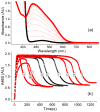
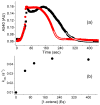
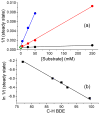
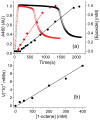
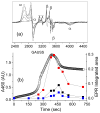








Similar articles
-
Bioinspired Nonheme Iron Catalysts for C-H and C═C Bond Oxidation: Insights into the Nature of the Metal-Based Oxidants.Acc Chem Res. 2015 Sep 15;48(9):2612-21. doi: 10.1021/acs.accounts.5b00053. Epub 2015 Aug 17. Acc Chem Res. 2015. PMID: 26280131
-
Stereospecific alkane hydroxylation by non-heme iron catalysts: mechanistic evidence for an Fe(V)=O active species.J Am Chem Soc. 2001 Jul 4;123(26):6327-37. doi: 10.1021/ja010310x. J Am Chem Soc. 2001. PMID: 11427057
-
Tetranuclear iron(III) complexes of an octadentate pyridine-carboxylate ligand and their catalytic activity in alkane oxidation by hydrogen peroxide.Dalton Trans. 2006 Jan 21;(3):492-501. doi: 10.1039/b512069a. Epub 2005 Oct 10. Dalton Trans. 2006. PMID: 16395449
-
Oxidation of alkane and alkene moieties with biologically inspired nonheme iron catalysts and hydrogen peroxide: from free radicals to stereoselective transformations.J Biol Inorg Chem. 2017 Apr;22(2-3):425-452. doi: 10.1007/s00775-016-1434-z. Epub 2017 Jan 25. J Biol Inorg Chem. 2017. PMID: 28124122 Review.
-
High-valent nonheme iron-oxo species in biomimetic oxidations.J Inorg Biochem. 2006 Apr;100(4):421-33. doi: 10.1016/j.jinorgbio.2006.01.014. Epub 2006 Mar 13. J Inorg Biochem. 2006. PMID: 16530841 Review.
Cited by
-
Intramolecular C-H Oxidation in Iron(V)-oxo-carboxylato Species Relevant in the γ-Lactonization of Alkyl Carboxylic Acids.ACS Catal. 2024 Sep 11;14(18):14183-14194. doi: 10.1021/acscatal.4c01258. eCollection 2024 Sep 20. ACS Catal. 2024. PMID: 39324053 Free PMC article.
-
Salicylate 5-Hydroxylase: Intermediates in Aromatic Hydroxylation by a Rieske Monooxygenase.Biochemistry. 2019 Dec 31;58(52):5305-5319. doi: 10.1021/acs.biochem.9b00292. Epub 2019 May 15. Biochemistry. 2019. PMID: 31066545 Free PMC article.
-
Rapid and Highly Selective Fe(IV) Generation by Fe(II)-Peroxyacid Advanced Oxidation Processes: Mechanistic Investigation via Kinetics and Density Functional Theory.Environ Sci Technol. 2024 Sep 14;58(38):17157-67. doi: 10.1021/acs.est.4c05234. Online ahead of print. Environ Sci Technol. 2024. PMID: 39276080 Free PMC article.
-
Dynamic chloride ion adsorption on single iridium atom boosts seawater oxidation catalysis.Nat Commun. 2024 Mar 4;15(1):1973. doi: 10.1038/s41467-024-46140-y. Nat Commun. 2024. PMID: 38438342 Free PMC article.
-
Sc3+ (or HClO4) Activation of a Nonheme FeIII-OOH Intermediate for the Rapid Hydroxylation of Cyclohexane and Benzene.J Am Chem Soc. 2018 May 2;140(17):5798-5804. doi: 10.1021/jacs.8b01435. Epub 2018 Apr 17. J Am Chem Soc. 2018. PMID: 29618199 Free PMC article.
References
Publication types
MeSH terms
Substances
Grants and funding
LinkOut - more resources
Full Text Sources
Other Literature Sources
Medical

